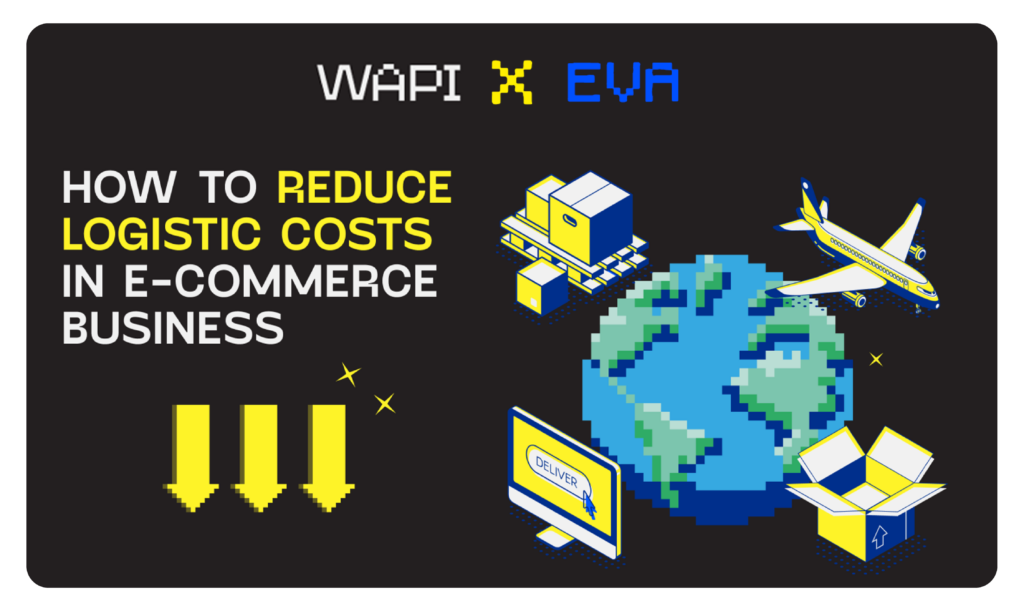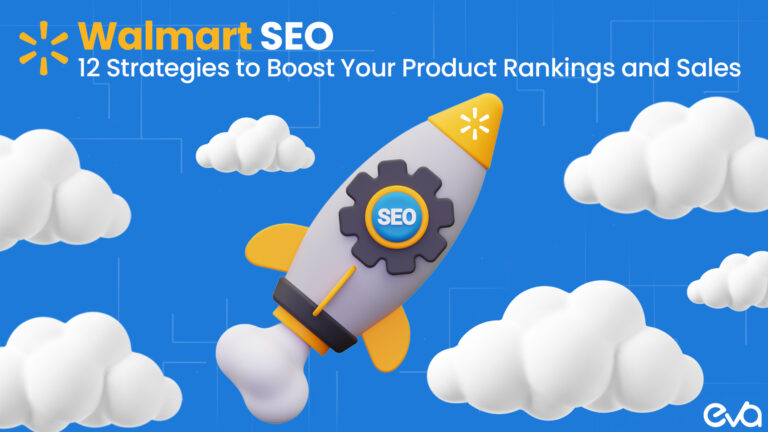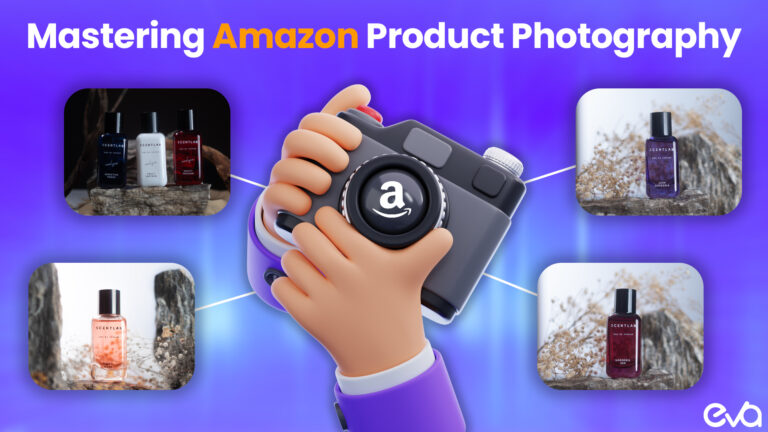Logistics plays a crucial role in the success of e-commerce businesses. It encompasses the entire process of managing the flow of goods, including inventory management, order fulfillment, warehousing, transportation, and delivery. In e-commerce, logistics directly impacts customer satisfaction and loyalty. Timely and accurate deliveries are key to meeting customer expectations, ensuring repeat business, and building a positive brand reputation.
Table of Contents
- Why Reduce Logistic Costs
- Analysis of Current Logistics Costs
- How Do Logistic Costs Impact the Profitability of E-commerce Businesses
- Recognize Challenges of E-commerce Logistics
- Strategies for Reducing Logistics Costs
- Negotiating Favorable Contracts with Service Providers
- Main Strategies of Reducing Logistic Costs
- Implementing Technology Solutions
- Streamlining Order Fulfillment Processes
- Optimizing Packaging and Dimensional Weight
- Implementing continuous improvement initiatives
- Integration of technology solutions
- Conclusion
Why Reduce Logistic Costs
Businesses consider reducing logistics costs due to several reasons:
It will enhance profitability
Logistics costs often constitute a significant portion of a business’s operating expenses. By reducing these costs, e-commerce companies can improve their profit margins and financial performance.
It will give competitive advantage
In the highly competitive e-commerce landscape, companies that can offer lower prices due to reduced logistics costs gain a competitive edge. This advantage can attract more customers and drive increased sales.
It will bring scalability and growth
As e-commerce businesses scale and expand, managing logistics efficiently becomes even more crucial. By reducing logistics costs, companies can allocate resources to other areas of growth and invest in improving customer experiences, optimizing storage, or expanding product offerings.
E-commerce businesses recognize the significance of reducing logistics costs as a means to improve profitability, gain a competitive advantage, foster growth, and contribute to sustainability efforts. Effective cost reduction strategies in logistics can have a profound impact on the overall success and sustainability of e-commerce operations.
Analysis of Current Logistics Costs
The first step before making any changes in your ecommerce strategy is analysis. Below you can find the key factors to investigate.
Identify Key Components of Logistics Costs
Transportation costs
These costs are a significant component of logistics expenses, encompassing various factors related to the movement of goods from one location to another. The following are key components of transportation costs:
Freight charges
This includes the fees charged by carriers for transporting goods, which may vary based on factors such as distance, weight, and mode of transportation.
Fuel costs
The price of fuel directly impacts transportation costs, as it constitutes a significant expense for vehicles used in logistics operations. Fluctuations in fuel prices can influence overall shipping expenses.
Maintenance and repair expenses
This includes the costs associated with vehicle maintenance, repairs, and general upkeep. Regular servicing and timely repairs are essential to ensure efficient and reliable shipping, but they also contribute to the overall transportation costs.
Warehousing costs
These costs are incurred when putting goods in a dedicated storage before they are transported to their final destination. The following are key components of warehousing costs:
Storage rent or lease expenses
This includes the cost of leasing or renting a warehouse space, which can vary depending on factors such as location and size.
Labor costs
These encompass wages, benefits, and other expenses associated with the workforce involved in warehouse operations, including material handling, inventory management, and order fulfillment.
Inventory carrying costs
These costs include expenses related to holding inventory in storage, such as insurance, taxes, depreciation, and obsolescence costs. It is essential to carefully manage inventory levels to minimize carrying costs while ensuring sufficient stock availability in storage.
Inventory costs
Inventory costs are incurred throughout the lifecycle of inventory, from procurement to storage and sale. The following are key components of inventory costs:
Holding costs
These costs include expenses associated with storage and inventory, such as warehousing costs, insurance, utilities, and security.
Obsolescence costs
These costs arise from inventory that becomes outdated, expired, or unsellable. It includes the loss of value associated with obsolete inventory and the costs of disposing of or liquidating such inventory in the storage.
Insurance and taxes
These costs encompass insurance premiums related to inventory protection, as well as taxes imposed on inventory holdings or transactions.
Packaging costs
They involve expenses associated with packaging materials and processes. Effective packaging is crucial for protecting products during shipping and presenting them attractively to customers. The following are key components of packaging costs:
Packaging materials
These costs include the materials used for packaging, such as boxes, containers, tapes, cushioning materials, and labels. The choice of materials can impact costs, durability, and sustainability.
Packaging design and labeling
These costs are associated with the design, printing, and application of labels, tags, and branding elements on packaging. Eye-catching and informative packaging design can influence consumer perception and product appeal.
Storage and handling expenses
These costs are incurred when storing and managing packaging materials, including the space required for storage, handling equipment, and labor for packaging material management.
By identifying and understanding these key components of logistics costs, businesses can gain insights into their cost structure and make informed decisions to optimize expenses in each area. Effective cost management strategies in shipping, warehousing, storage, inventory, and packaging can lead to improved operational efficiency and profitability in logistics operations.
How Do Logistic Costs Impact the Profitability of E-commerce Businesses
Understanding the interference between logistic costs and the overall profitability of the business allows companies to prioritize cost reduction efforts. The impact of logistics costs on the profitability of e-commerce businesses cannot be underestimated.
Gross margin
Logistics costs directly affect the gross margin of e-commerce businesses. High logistics costs can erode profit margins, particularly for businesses operating in highly competitive markets with slim margins.
Pricing strategy
Logistics costs influence the pricing decisions of e-commerce businesses. To remain competitive, companies must balance their pricing strategy with the costs associated with fulfilling orders and delivering products to customers.
Customer acquisition and retention
Logistics costs impact customer satisfaction and loyalty. Delays, errors, or high shipping costs can lead to dissatisfied customers who may choose to shop elsewhere. On the other hand, efficient logistics operations can contribute to positive customer experiences, repeat business, and brand loyalty.
Order fulfillment efficiency
Streamlined logistics processes contribute to faster order fulfillment, shorter delivery times, and improved customer satisfaction. Efficient logistics operations can lead to higher sales and reduced costs associated with order handling and customer service.
Understanding the relationship between these costs and overall profitability is crucial for companies to effectively manage their operations and remain competitive in the market. In this section, we will explore key points highlighting the influence of logistics costs on profitability, including gross margin, pricing strategy, customer acquisition and retention, and order fulfillment efficiency.
By comprehending these dynamics, e-commerce businesses can prioritize cost reduction efforts and optimize their operations to enhance profitability.
Recognize Challenges of E-commerce Logistics
E-commerce logistics have unique difficulties that require careful consideration in cost reduction. Here are the main bottlenecks you have to consider before starting to reduce logistic costs:
Volume and seasonality
E-commerce businesses often experience fluctuating order volumes, particularly during peak seasons and promotional events. Managing logistics during these periods requires additional capacity, workforce planning, and coordination with carriers to meet increased customer demand.
Last-mile delivery
The last-mile delivery, which involves shipping goods from the warehouse to the customer’s doorstep, can be the most costly and challenging aspect of e-commerce logistics. Factors such as distance, delivery routes, traffic, and customer preferences for specific delivery time slots must be managed efficiently to minimize costs.
For example, to save on fulfillment in Europe, work with local carriers and shipping providers who have extensive networks and established routes. Local carriers may offer more competitive pricing, especially for domestic or regional shipments, compared to international carriers.
Omnichannel operations
Many e-commerce businesses operate across multiple channels: online marketplaces, their own websites, and physical stores. Coordinating logistics across these different channels, managing inventory levels, and ensuring seamless order fulfillment require sophisticated systems and processes.
Reverse logistics and returns
E-commerce businesses often experience higher return rates compared to traditional retail. Managing returns and reverse logistics involves additional costs and complexities, including restocking inventory, processing refunds, and handling product inspections.
Understanding these challenges and their impact on logistics costs is crucial for e-commerce businesses to develop tailored strategies for cost reduction. By addressing these bottlenecks proactively, companies can optimize their logistics operations and achieve significant cost savings, maintaining high customer satisfaction levels. However, you can reach out to a 3PL partner like WAPI, who will take all your difficulties and costs under their responsibility.
Strategies for Reducing Logistics Costs
There are numerous strategies to reduce logistic costs and gain more profit yourself. However, you can delegate all the routine and complicated work to a third-party logistics (3PL) company.
Partnering with a 3PL company to reduce costs
This will give you an opportunity to concentrate mainly on what you do best: developing your business, whereas the company will manage risks, take regulations into consideration, and, therefore, decrease all the costs for you. Here’s how a 3PL company will help you reduce your expenses.
Technology implementation
As 3PL companies possess advanced knowledge of the industry and use cutting-edge technology, businesses can implement a range of strategies to achieve cost reduction goals. From inventory management and data analytics to shipping optimization and warehouse efficiency, the collaboration with a 3PL provider brings valuable insights and solutions to organize logistics operations.
Analytics
It will make a thorough analysis of inventory, while businesses can identify slow-moving items and implement efficient inventory control measures, reducing carrying costs and improving turnover. The use of data analytics and technology helps identify inefficiencies, optimize routes, and forecast demand, and leads to reduced shipping costs and improved resource allocation.
Transportation
Effective transportation management is another area where 3PL companies excel. Leveraging their extensive network and negotiation power, they can secure cost-effective ecommerce shipping solutions, consolidate shipments, and optimize routes to minimize freight costs and improve delivery times. Additionally, they can advise on the best shipping modes, such as intermodal or multimodal, to maximize efficiency and cost savings.
Warehousing
Warehouse optimization and distribution strategies are also areas where collaboration with a 3PL provider can yield significant cost reductions. Their expertise in reconfiguring warehouse layouts, streamlining processes, and implementing inventory replenishment systems helps reduce storage costs, enhance order processing times, and improve order accuracy. Furthermore, an optimized distribution network ensures faster and more cost-effective delivery to customers.
Return management
Reverse logistics and returns management are often complex and costly processes, but 3PL providers can assist in developing effective strategies for handling returns, product recalls, repairs, recycling, and disposal. By streamlining these processes, businesses can minimize product loss, enhance customer satisfaction, and recover value from returned items, ultimately reducing logistics costs.
Supply chain
Collaboration and supply chain integration are critical for achieving long-term cost reduction goals. By fostering open communication and sharing relevant information with the 3PL partner, businesses can optimize supply chain visibility and coordination. This collaboration facilitates effective demand planning, reduces stockouts and overstocking, enhances order fulfillment accuracy, and minimizes the need for expedited shipping or emergency measures.
KPI tracking
To sustain cost reduction efforts, businesses must prioritize continuous improvement and performance measurement. Establishing KPIs and regularly monitoring performance with the assistance of 3PL providers enables businesses to identify areas for improvement and drive operational efficiencies. By continuously optimizing logistics operations, businesses can further reduce costs and strengthen their overall supply chain.
Amazon Preparation
A 3PL company can ease the way you enter Amazon. It will provide you with effective inventory management and fulfillment services to meet Amazon’s specific packaging requirements and optimize shipping and transportation. Additionally, a 3PL’s assistance in returns management, scalability, and flexibility ensures businesses can focus on sales and strategy. By partnering with a 3PL company, businesses can confidently navigate the complexities of Amazon preparation, enhance operational efficiency, and deliver a superior customer experience on the platform.
Negotiating Favorable Contracts with Service Providers
If you want your partnership with a 3PL company to be successful, here are the main aspects you need to take into account:
Establish long-term partnerships
Building strong relationships with 3PL service providers and carriers can lead to better negotiation opportunities. Long-term partnerships allow for more favorable contract terms, volume-based discounts, and improved service levels, resulting in cost savings and enhanced logistics performance.
Conduct competitive bidding processes
Periodically reviewing and conducting competitive bidding processes among different 3PL providers can help e-commerce businesses secure the most cost-effective logistics solutions. Comparing pricing, service offerings, and contractual terms can identify opportunities for cost savings while ensuring service quality.
Analyze service level agreements (SLAs)
Carefully reviewing and negotiating SLAs with logistics providers is essential. Clear and well-defined SLAs help establish performance expectations and penalties for non-compliance, ensuring that service providers meet agreed-upon service levels. Regularly monitoring and enforcing SLAs can help reduce costs associated with service failures or delays.
So, partnering with a 3PL company offers businesses opportunities to reduce logistic costs and optimize supply chain operations. By using their expertise, advanced technologies, and industry insights, businesses can implement strategies such as inventory management, data analytics, shipping optimization, warehouse efficiency, reverse logistics, and collaboration. These efforts lead to cost reductions, improved operational efficiencies, enhanced customer satisfaction, and ultimately, a more competitive position in the market.
Main Strategies of Reducing Logistic Costs
Now, let’s dive into strategies of how a business can reduce logistics costs with its own efforts, not relying on any third party logistic providers. This will take time and bring risks as the business can be not mature enough to implement them.
Using supplier collaboration and vendor-managed inventory (VMI)
Establishing strong partnerships and collaboration with suppliers can help streamline the replenishment process and reduce logistics costs. With VMI, the supplier takes responsibility for managing inventory levels based on agreed-upon targets, ensuring timely deliveries and minimizing stock outs or overstocking. This approach improves inventory accuracy, reduces holding costs, and enhances supply chain efficiency.
Utilizing real-time inventory tracking and management systems
Implementing advanced inventory management systems, such as warehouse management systems (WMS) and inventory tracking technologies (e.g., barcoding, RFID), allows e-commerce businesses to monitor inventory levels accurately and in real-time. This visibility enables better demand planning, reduces the risk of stockouts or excess inventory, and facilitates efficient order fulfillment, resulting in cost savings and improved customer satisfaction.
Enhancing Transportation Efficiency
Efficient transportation management is crucial for reducing logistics costs in e-commerce. By optimizing shipping operations, businesses can achieve cost savings and improve delivery performance:
Route optimization software
Advanced route planning and optimization software help identify the most efficient routes for deliveries, considering factors such as distance, traffic patterns, and final mile delivery time. By minimizing travel distances and reducing fuel consumption, e-commerce businesses can lower transportation costs and enhance delivery speed.
Adopting alternative transportation modes
Exploring alternative transportation modes, such as rail, intermodal, or parcel lockers, can help optimize costs, particularly for long-distance or bulk shipments. Choosing the most appropriate mode based on factors like transit time, cost, and sustainability can result in significant logistics cost savings.
Partner with a 3PL provider
It will save your money in several ways:
3PL providers often work with multiple clients, allowing them to leverage economies of scale. They can negotiate better rates with carriers, warehouse providers, and other service providers due to their larger volume of shipments. Businesses can benefit from reduced transportation and warehousing costs.
3PL providers have established infrastructure and expertise in managing logistics operations. They have access to advanced technology, warehouse facilities, shipping networks, and skilled personnel. Outsource logistics to a 3PL provider, and you’ll be able to avoid the need to invest in their own infrastructure and resources, resulting in cost savings.
Partnering with a 3PL provider allows businesses to focus on their core competencies and strategic activities. Companies can redirect their resources and efforts towards areas that directly contribute to their competitive advantage and revenue generation with the help of a 3PL company. Improved focus and efficiency can lead to cost savings and enhanced performance.
3PL providers offer scalability and flexibility to adjust logistics operations based on demand fluctuations. Businesses can scale up or down their logistics requirements without the need to invest in additional resources or infrastructure. This agility allows companies to optimize costs by aligning logistics capacity with actual demand.
3PL providers can help mitigate risks associated with logistics operations. They have robust risk management systems, insurance coverage, and compliance expertise. Businesses can minimize the risk of disruptions, errors, damages, or regulatory non-compliance by partnering with a reliable 3PL provider. This will result in cost savings and protect the company’s reputation.
3PL providers are focused on delivering efficient and cost-effective logistics solutions. They constantly evaluate and improve their processes, technologies, and supply chain strategies. By partnering with a 3PL provider, businesses can benefit from these continuous improvement initiatives.
Implementing Technology Solutions
Leveraging technology solutions can significantly streamline logistics operations, increase efficiency, and reduce costs for e-commerce businesses. In today’s rapidly evolving digital landscape, embracing innovative tools and systems is crucial to staying competitive in the market. By integrating technology into their logistics processes, e-commerce companies can overcome challenges, optimize operations, and achieve cost savings.
Employing warehouse management systems (WMS)
WMS platforms enable real-time inventory visibility, optimize order picking routes, automate replenishment processes, and improve overall warehouse efficiency. E-commerce businesses can achieve cost savings in warehousing and order fulfillment service by reducing manual errors, streamlining operations, and optimizing labor utilization.
Order management systems (OMS)
OMS platforms integrate and centralize order processing, inventory management, and customer data. They enable businesses to automate order workflows, reduce processing time, and improve order accuracy. By streamlining order management processes, e-commerce companies can enhance efficiency, reduce errors, and lower associated costs.
Automation and robotics in warehouses
Implementing automation technologies, such as conveyor systems, robotic picking, automated sortation, and packing systems, can significantly improve warehouse productivity and reduce labor costs. Automation reduces order processing time, minimizes errors, and optimizes space utilization, leading to cost savings in warehouse operations.
In conclusion, leveraging technology solutions in e-commerce logistics presents immense opportunities for cost reduction and operational efficiency. Warehouse Management Systems, Order Management Systems, and automation technologies offer e-commerce businesses the means to streamline operations, optimize resources, and enhance customer satisfaction. By adopting these solutions, companies can navigate the complex logistics landscape, achieve significant cost savings, and pave the way for sustainable growth in the highly competitive e-commerce industry.
Streamlining Order Fulfillment Processes
Efficient order fulfillment is a critical factor that can make or break a business. It not only impacts customer satisfaction, but also plays a significant role in logistics costs. In this section, we will explore strategies to streamline order fulfillment processes and reduce associated expenses. By implementing pick-and-pack optimization techniques, utilizing batch order processing, and optimizing returns and reverse logistics, e-commerce businesses can achieve greater efficiency and cost savings.
Implementing pick-and-pack optimization techniques
By analyzing order patterns and product placement, e-commerce businesses can optimize the picking and packing processes. Grouping frequently ordered items, implementing efficient picking routes, and utilizing barcode scanning or voice picking technology can increase productivity, reduce errors, and minimize labor and fulfillment costs.
Utilizing batch order processing
Grouping orders with similar characteristics or destinations allows for more efficient order fulfillment. Batch processing minimizes travel time within the warehouse and optimizes order consolidation for shipping, which results in cost savings in labor, packaging, and transportation.
Optimizing returns and reverse logistics
Efficient management of returns and reverse logistics is essential for reducing costs associated with fulfillment. Implementing streamlined processes for returns authorization, inspection, and restocking can minimize handling costs and speed up the refund or exchange process. By optimizing reverse logistics operations, e-commerce businesses can improve customer satisfaction and reduce the overall cost of returns.
In conclusion, streamlining order fulfillment processes is vital for e-commerce businesses seeking to reduce costs and enhance customer satisfaction. By implementing pick-and-pack optimization techniques, such as analyzing order patterns, optimizing product placement, and utilizing advanced technologies, businesses can improve productivity, reduce errors, and minimize labor and fulfillment costs.
Utilizing batch order processing allows more efficient order consolidation and transportation, resulting in cost savings in labor, packaging, fulfillment, and shipping. Additionally, optimizing returns and reverse logistics processes through streamlined authorization, inspection, and restocking procedures can minimize handling costs and enhance the overall customer experience.
E-commerce businesses can achieve higher operational efficiency, cost savings, and ultimately drive growth in a competitive marketplace by prioritizing efficient order fulfillment and continuously seeking improvement opportunities. Embracing these strategies not only benefits the bottom line but also enhances the overall customer journey, fosters loyalty and establishes a competitive edge in the e-commerce landscape.
Optimizing Packaging and Dimensional Weight
Carefully select packaging materials, eliminate excessive packaging, and manage dimensional weight pricing, and you will achieve significant savings. You can also see that there’s an opportunity to reduce logistic costs if you choose the right weight and dimensions for orders.
Utilizing efficient packaging materials
Choosing packaging materials that are lightweight, durable, and cost-effective can significantly reduce logistics costs. Optimal packaging solutions protect products while minimizing dimensional weight and shipping costs. Using innovative packaging materials, such as eco-friendly alternatives or right-sized packaging, can further enhance cost savings.
Reducing excessive packaging
Eliminating unnecessary packaging materials or right-sizing packages based on the size and fragility of the products can lead to substantial cost reductions. Excessive packaging not only increases material costs but also raises transportation expenses due to increased dimensional weight and wasted space.
Managing dimensional weight pricing
Many logistics providers charge based on dimensional weight, which considers both the weight and volume of a package. Optimizing packaging dimensions to minimize dimensional weight can result in significant cost savings. Negotiating favorable dimensional weight pricing with carriers based on shipment volume and density can also help reduce costs.
Monitoring and Analyzing Key Performance Indicators (KPIs)
Implementing a comprehensive set of KPIs allows e-commerce businesses to measure and monitor logistics performance. Tracking metrics related to order fulfillment, transportation, and customer satisfaction provides insights into areas that require improvement, leading to enhanced efficiency and cost reduction.
Utilizing data analytics to identify improvement opportunities
Analyzing logistics data, such as order patterns, transportation costs, and inventory turnover, can reveal areas of inefficiency or cost drivers. Use data analytics tools, and you’ll be able to identify improvement opportunities, make data-driven decisions, and optimize logistics processes to reduce costs.
Optimizing packaging and dimensional weight plays a crucial role in reducing logistics costs for e-commerce businesses. Utilize efficient packaging materials, reduce excessive packaging, and manage dimensional weight pricing, so you could achieve substantial savings in shipping and material expenses. Furthermore, monitor key performance indicators (KPIs) and leverage data analytics to provide valuable insights into areas that require improvement, which will allow you to make data-driven decisions and optimize logistics processes.
In today’s competitive e-commerce landscape, cost reduction is a critical factor for success. Implementing these strategies not only contributes to the bottom line but also improves overall operational efficiency. Evaluate packaging practices, monitor performance metrics, and leverage data analytics, so you could identify improvement opportunities and make informed decisions to optimize logistics processes, reduce costs, and enhance customer satisfaction.
Implementing continuous improvement initiatives
Regularly reviewing performance data, identifying bottlenecks, and implementing process improvements is crucial for ongoing cost reduction in e-commerce logistics. However, there are potential challenges that businesses may face on their way.
Potential Challenges and Strategies to Resolve Them
Resistance to change and employee training
Implementing cost reduction strategies in e-commerce logistics may encounter resistance from employees who are accustomed to existing processes. To overcome this challenge:
Communicate the benefits
Clearly communicate the reasons and benefits of cost reduction initiatives to employees. Emphasize how it can lead to improved efficiency, reduced errors, and long-term business sustainability.
Provide training and support
Offer comprehensive training programs to equip employees with the necessary skills and knowledge to adapt to new processes and technologies. Provide ongoing support to address concerns and ensure a smooth transition.
Foster a culture of continuous improvement
Encourage employee engagement and participation by fostering a culture of continuous improvement. Recognize and reward innovative ideas that contribute to cost reduction efforts.
Integration of technology solutions
Integrating new technology solutions into existing logistics operations can present challenges. To facilitate successful integration:
Conduct thorough research
Prioritize technology solutions that align with the specific needs and requirements of the e-commerce business. Conduct thorough research, seek recommendations, and evaluate potential partners or vendors.
Develop a phased implementation plan
Create a detailed implementation plan that outlines the steps, timelines, and resources required for integrating new technologies. Consider a phased approach to mitigate disruption and allow for testing and refinement.
Provide training and support
Ensure that employees receive adequate training and support to effectively use and leverage the technology solutions. Offer ongoing assistance to address any technical issues and maximize the benefits of the implemented technologies.
Ensuring customer satisfaction in cost reduction efforts
While reducing logistics costs is crucial, maintaining customer satisfaction is equally important. To balance cost reduction efforts with customer expectations:
Set clear service level expectations
Clearly communicate any changes in shipping times, delivery options, or return processes to customers. Set realistic expectations and provide transparency to manage customer expectations effectively.
Prioritize order accuracy and timeliness
Ensure that cost reduction efforts do not compromise order accuracy and timeliness. Focus on optimizing order fulfillment processes and maintaining consistent delivery performance to meet customer expectations.
Provide proactive customer support
Invest in a responsive customer support team that can address any inquiries or concerns promptly. Be proactive in communication and provide regular updates on order status or any potential delays.
Conclusion
Reducing logistics costs in e-commerce is crucial for improving profitability and maintaining competitiveness. Throughout this article, we have discussed various strategies for achieving cost reductions, including improving inventory management, enhancing transportation efficiency, optimizing packaging, negotiating contracts, and monitoring performance.
As technology continues to advance, e-commerce logistics will witness new opportunities and trends. These may include further automation and robotics, the integration of artificial intelligence and machine learning, and the emergence of sustainable and eco-friendly logistics practices.
The best way to save your time and effort is to partner with a reliable and trustworthy company like WAPI. WAPI is a courier, warehouse, and fulfillment aggregator. It will help you find the most cost-effective solution and omit mistakes while you’re expanding your business globally.
If you embrace these trends and adapt to changing customer needs you will have a competitive advantage in the evolving landscape. Implement effective cost reduction strategies, so you could optimize logistics operations, reduce expenses, enhance customer satisfaction, and ultimately achieve long-term success in the dynamic world of e-commerce.








